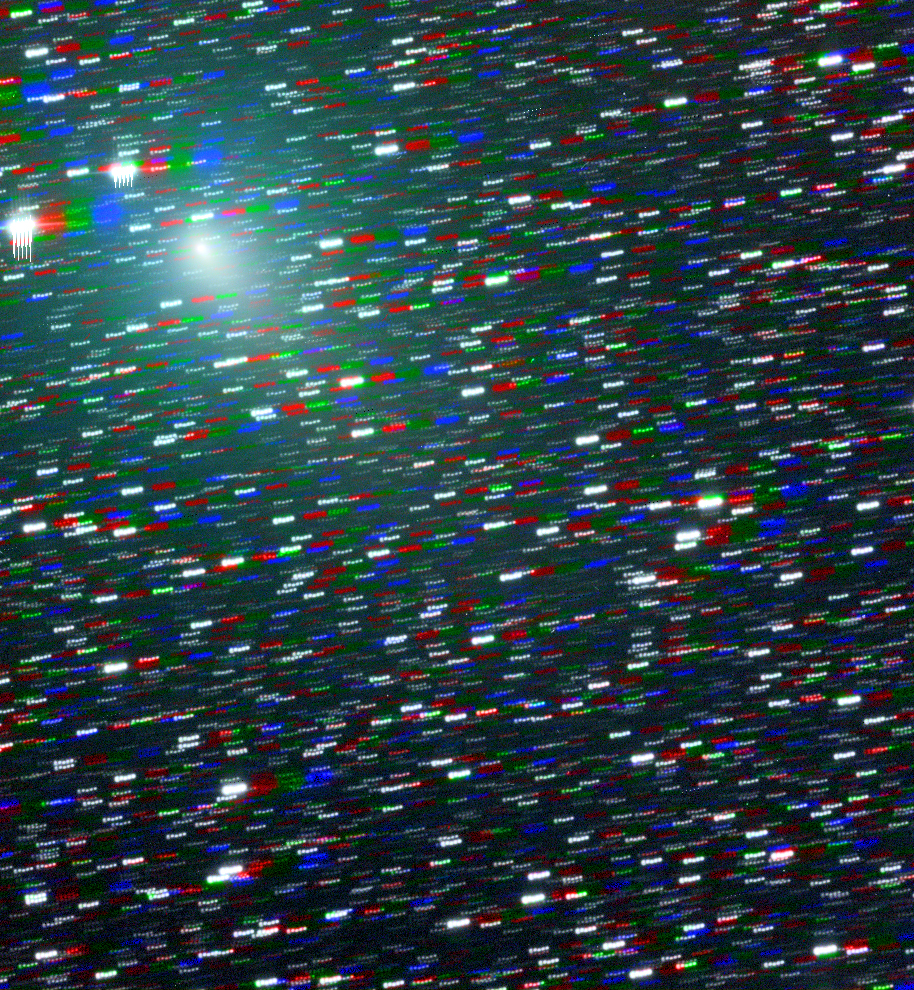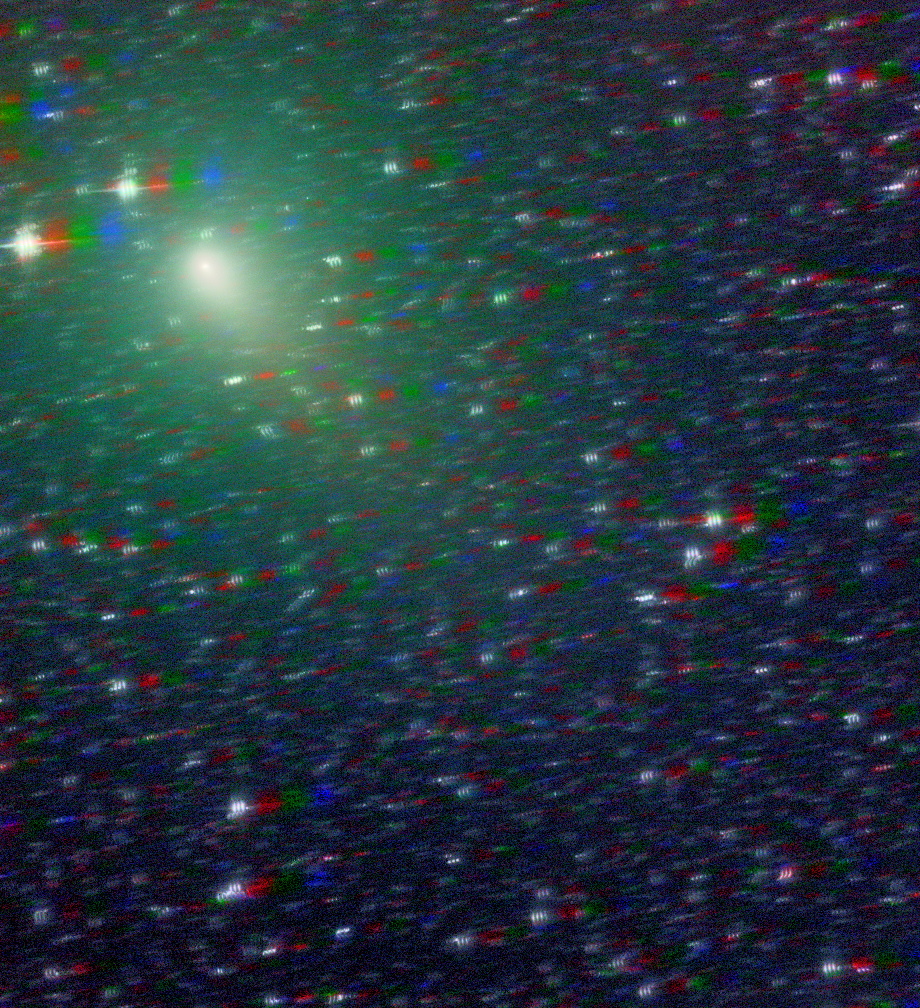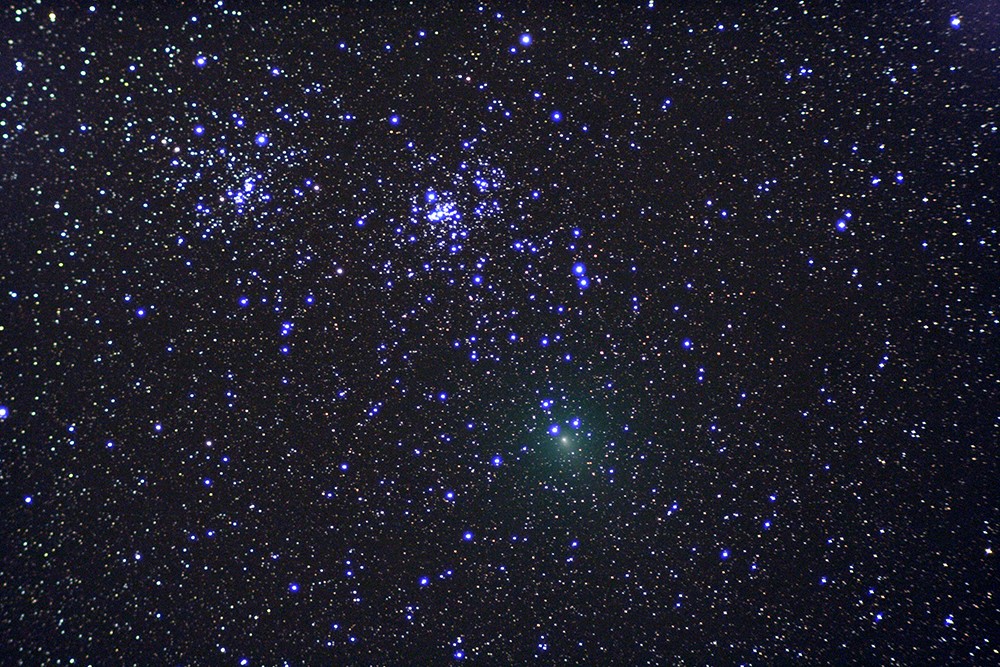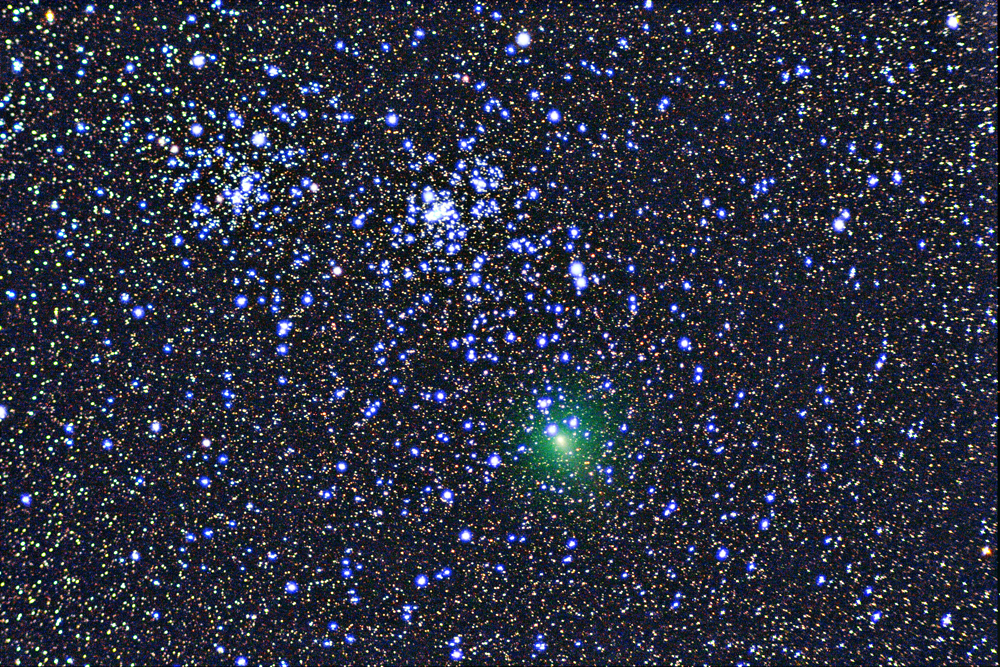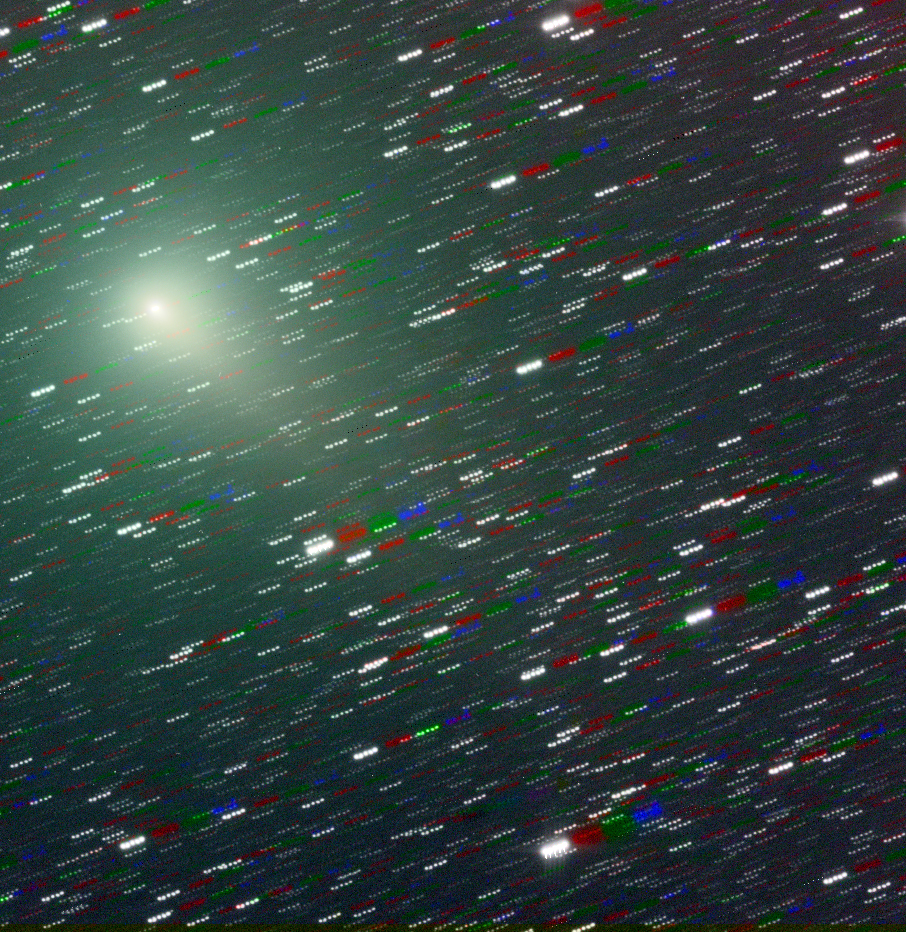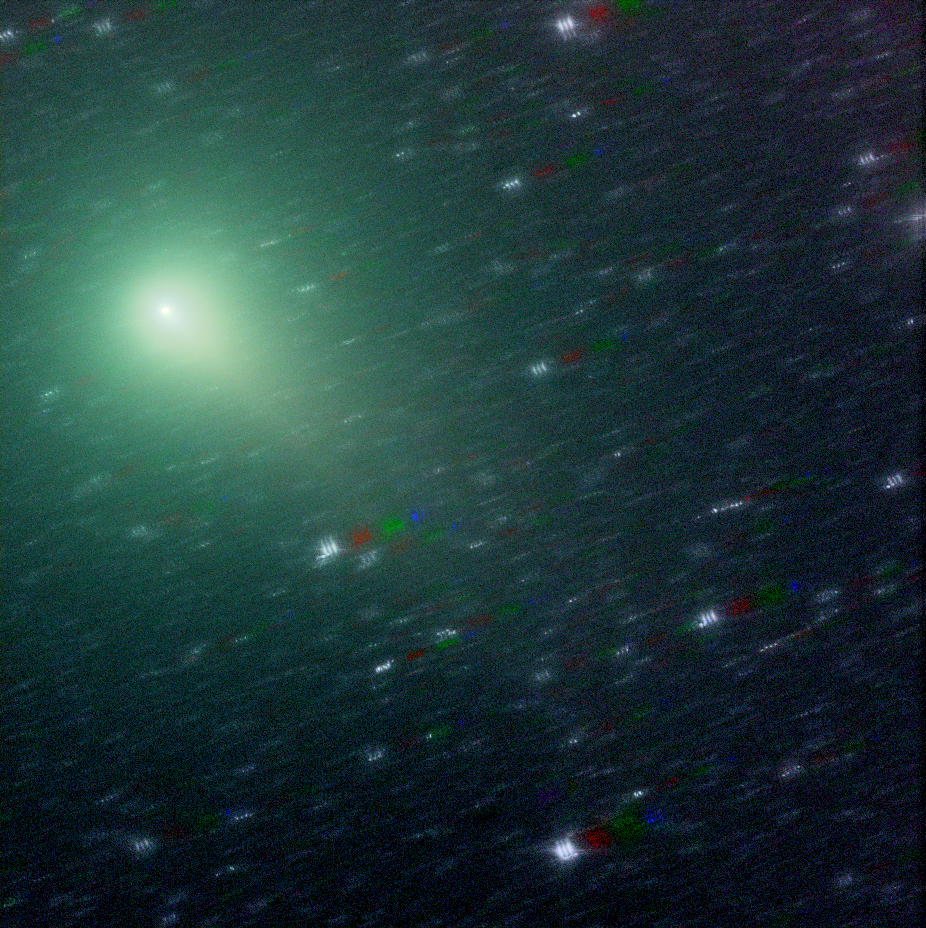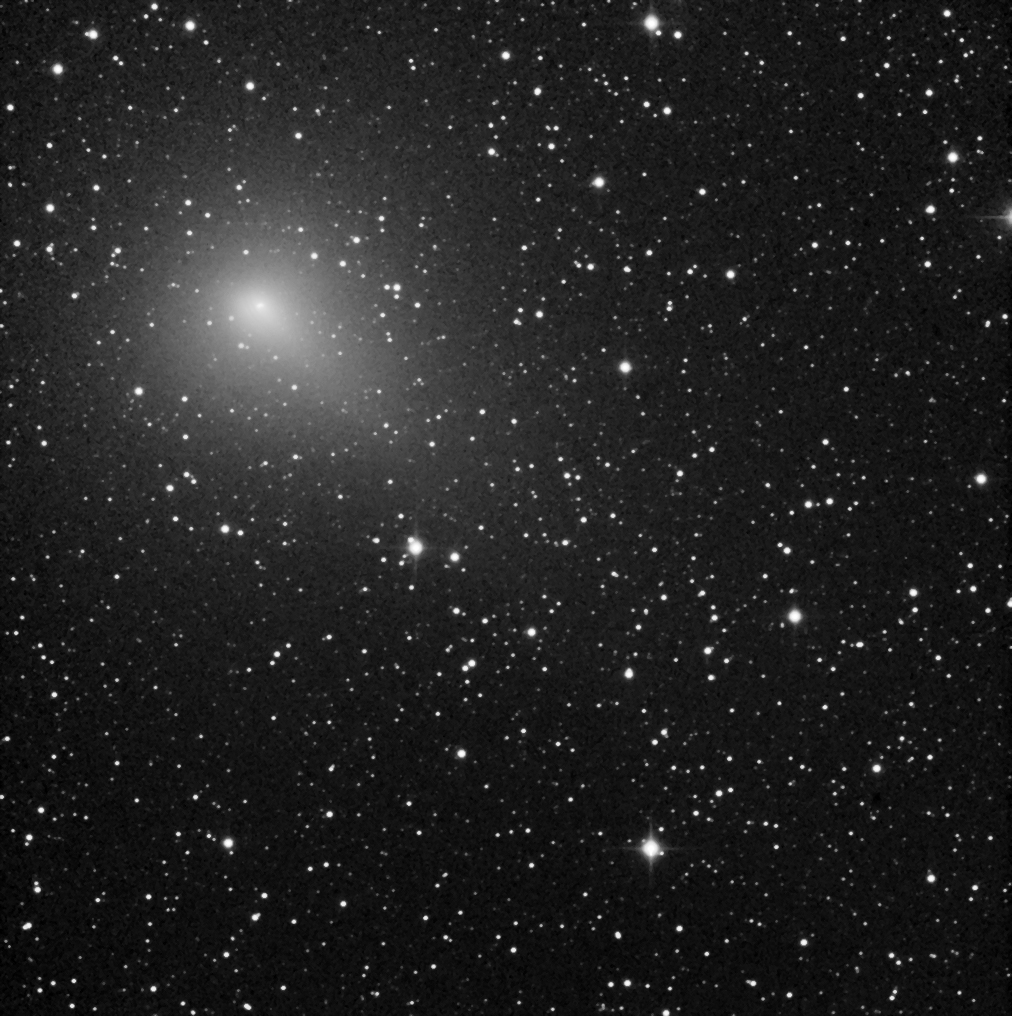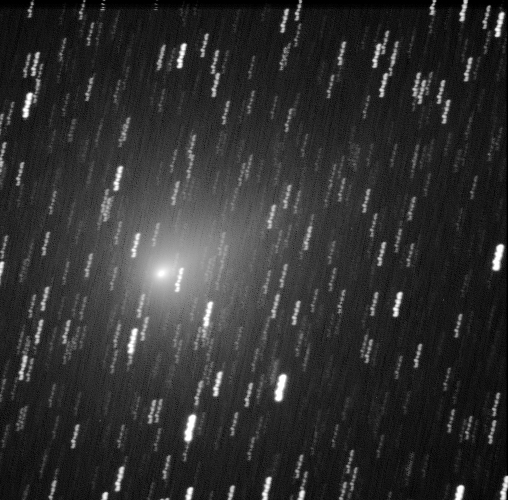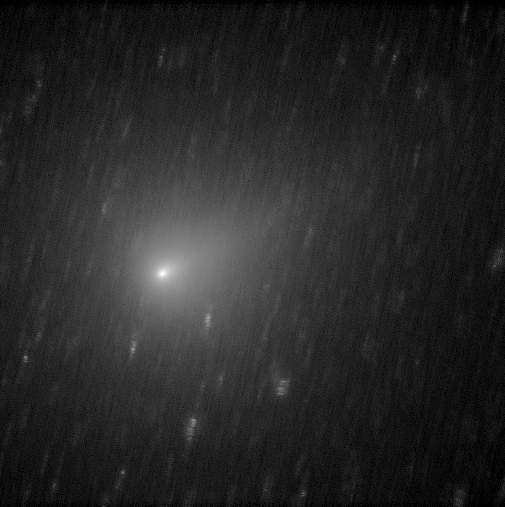Comet 103P/ Hartley 2, October 12, 2010.
Combination of 5, 1 minute images unfiltered.
SBIG STL-1001E CCD. 20" f/6.8 Dall-Kirkham cassegrain at prime focus.
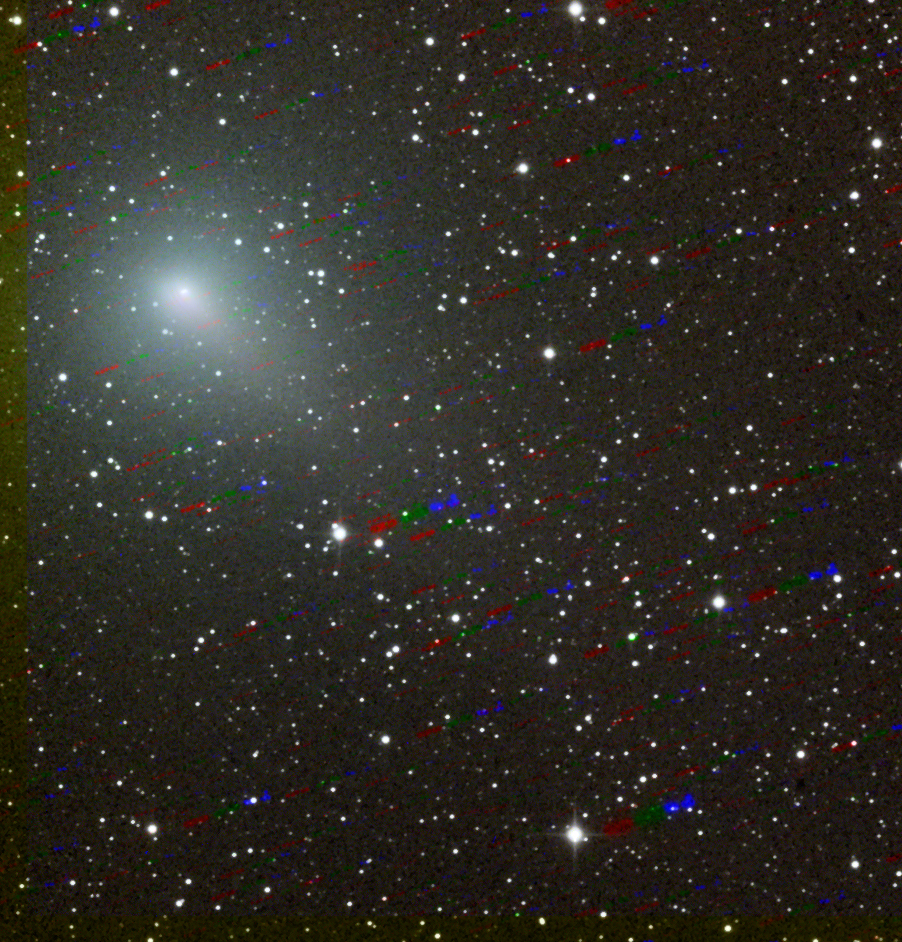
Comet 103P/ Hartley 2, October 12, 2010.
Combination of 5, 1 minute images unfiltered.
SBIG STL-1001E CCD. 20" f/6.8 Dall-Kirkham cassegrain at prime focus.
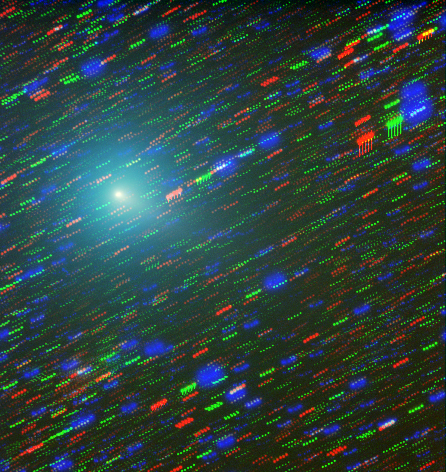
Comet 103P/ Hartley 2, October 14, 2010.
Combination of 5, 3 minute images using red, green and blue filters.
SBIG ST-9XE CCD. 5" f/5 refractor at prime focus.
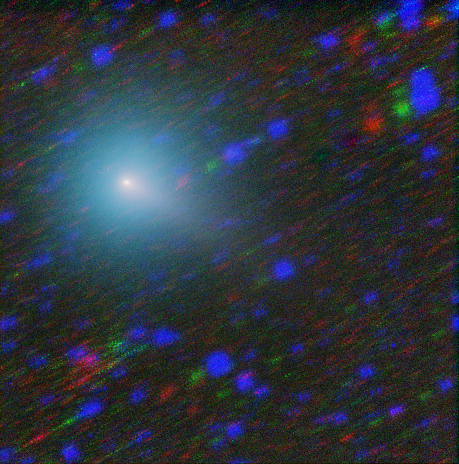
Comet 103P/ Hartley 2, October 14, 2010.
The same set of images used above, however this time the images have been combined using a median filter to minimise the stars.
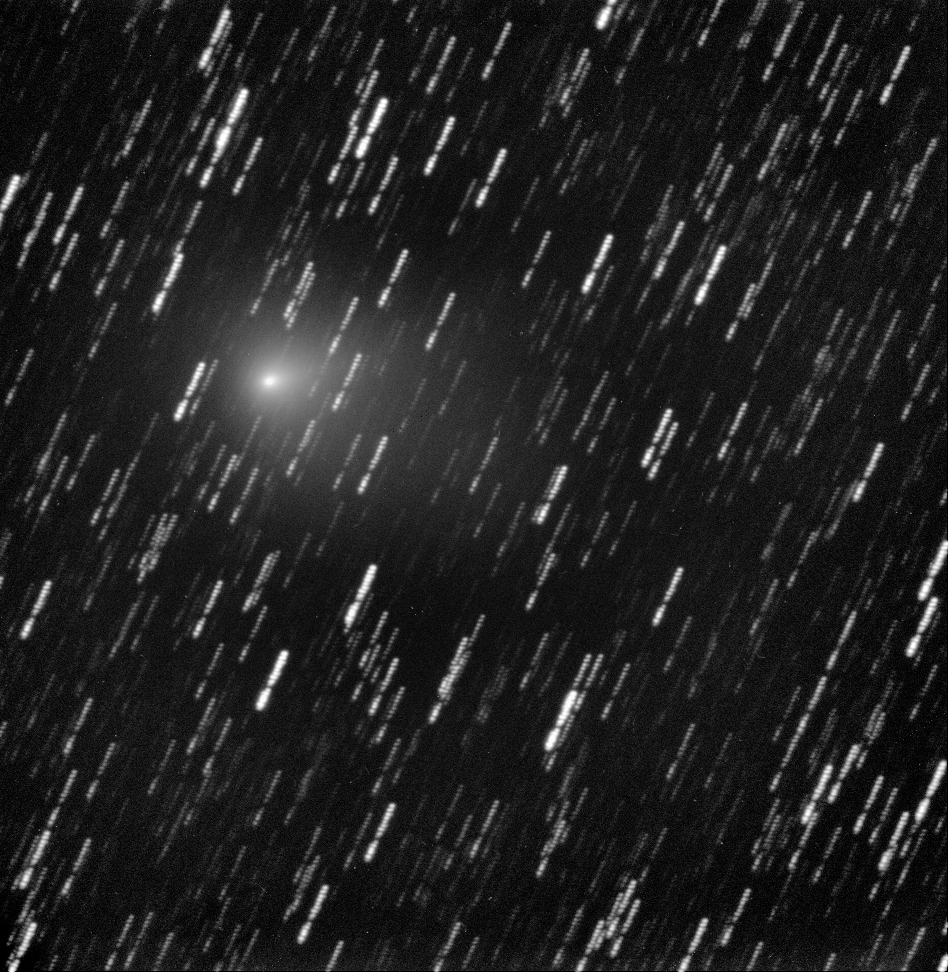
Comet 103P/ Hartley 2, October 31, 2010.
Combination of 10, 1 minute images unfiltered.
SBIG ST-9E CCD. 14" f/11 schmidt-cassegrain with an f/6.3 focal reducer.
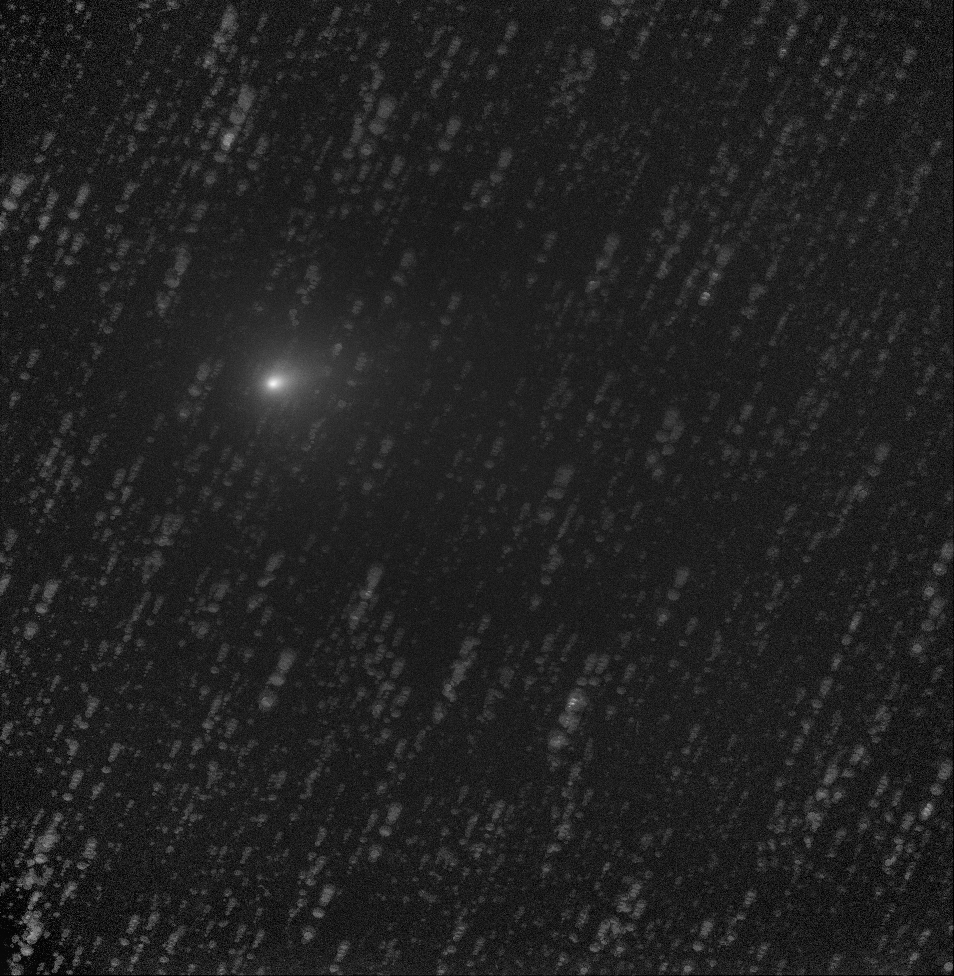
Comet 103P/ Hartley 2, October 31, 2010.
The same set of images used above, however this time the images have been combined using a median filter to minimise the stars.
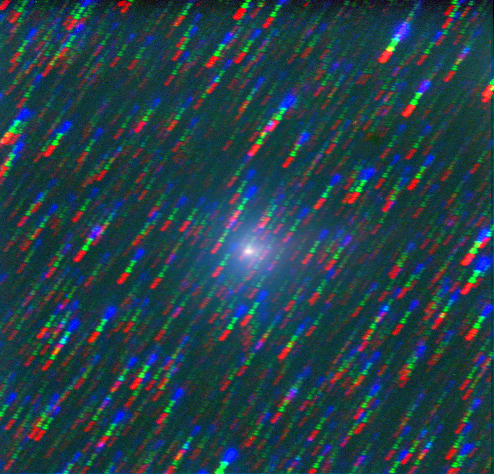
Comet 103P/ Hartley 2, October 31, 2010.
Combination of 5, 3 minute images using red, green and blue filters.
SBIG ST-9XE CCD. 5" f/5 refractor at prime focus.
